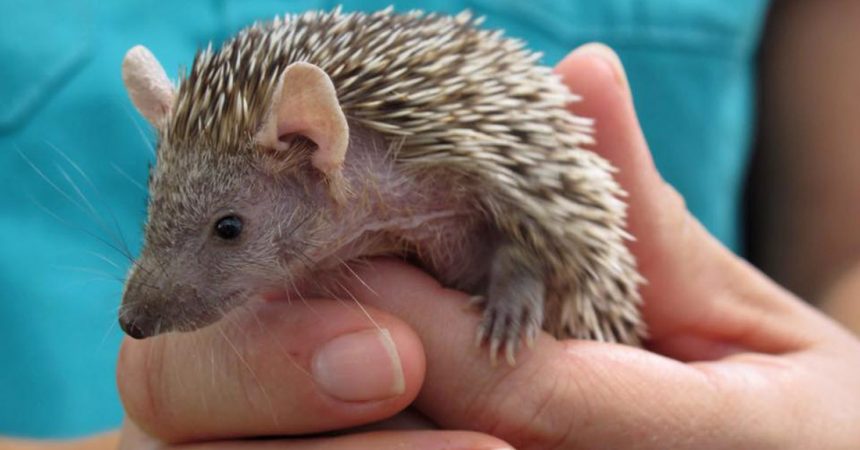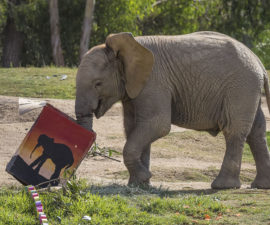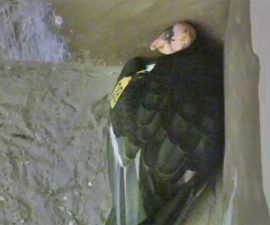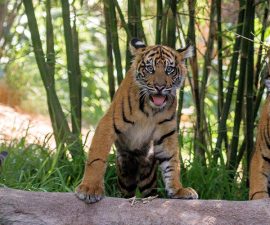It’s always a banner day spending time at the Safari Park, but when it includes a behind-the-scenes experience, it becomes a shiny, indelible memory with really cool photo ops. So it was on an August morning when my husband and I took the Behind-the-Scenes Safari of the new Rhino Rescue Center. After a jaunt through Tiger Trail—an exhibit that still leaves me agape—we returned to the entrance area to meet our guide. Our excited group of five adults and two young boys climbed aboard the personal cart for our adventure!
Aaron, our trusty guide, shared that of the Safari Park’s 1,800 acres, 800 acres are undeveloped to allow the local flora and fauna to flourish. Coastal sage scrub is a rare and wonderful plant community that includes a plethora of plants, insects, reptiles, birds, and mammals, many of which are rare and secretive like the coastal California gnatcatcher and coastal patch-nosed snake. San Diego Zoo Global has about 140 conservation projects in 80 countries, including several local projects, which is encouraging. Southern California has not had a drop of rain for many, many moons and the landscape reflects it—beyond the reach of sprinklers it is crunchy and parched. I am thankful to have my chilled, reusable water bottle on hand.
The cart zipped up a hillside to our first stop: the Wildlife Workshop. Training is the theme for our tour, and here we learn first hand how keepers patiently coax desired behaviors out of an eclectic group of animals. From a lumbering aardvark to an impossibly alert pygmy falcon to a popcorn-scented binturong, these keepers work a “wild” crowd, reinforcing certain behaviors so that the animals can become calm and confident ambassadors, providing people with an unforgettable up-close encounter with wildlife.

Meeting Milo the kinkajou was a rare and delightful experience!
We are introduced to a 17-year-old kinkajou named Milo. This Central and South American mammal is in the raccoon family, surprisingly, and through its diet, serves as an important seed disperser and pollinator in its forest habitat. Next is the highly skilled South African porcupine named Pokey. It’s startling to see the long mane of quills (which are simply modified hairs) and the hollow, golden colored rattle quills in the back. Pokey prances around on a red leash awing the crowd and earns a couple of coveted ears of raw corn. The animal holds the cob in both “hands” and quickly devours the corn while making vocalizations of contentment. I cannot look away! The keeper explains how the clicker is used as a “bridge” between the desired behavior and getting the reward. Through countless “baby steps” of reinforcing behaviors, great things can be achieved with just about any creature (including children and spouses). Lastly, we were introduced to a nocturnal insectivore from Madagascar, and quite possibly the cutest thing on the planet. Easily confused with the hedgehog, the pygmy tenrec (pictured above the title) left me speechless. Ever curious, the spikey little animal peeked over its keeper’s hand regarding us steadily. I was smitten!
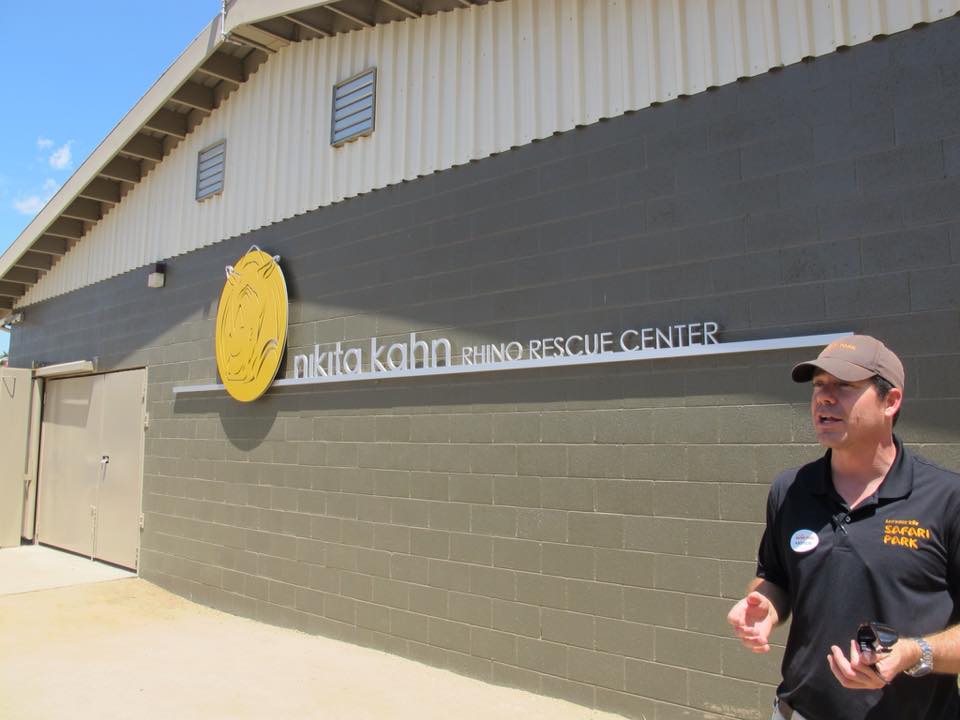
Having a knowledgeable guide provides access to special areas, not to mention an astonishing amount of rich information.
The adventure continued over to the three-acre Nikita Kahn Rhino Rescue Center, which opened in November 2015. The center was specially built for six female southern white rhinos that were relocated to the Safari Park from private reserves in South Africa as part of a collaborative conservation effort to save the critically endangered northern white rhino—and all rhino species—from extinction. The barn and cable pens are customized so keepers can safely work with, monitor, and move “the girls” where they need them. The same team of keepers takes care of the rhinos each day, developing trust and rapport with them. Moving the rhinos between the different yards helps to desensitize them to different areas and sounds so that when the artificial insemination procedures take place, they will be relaxed and agreeable.

The opportunity for up-close moments with animals is a precious experience that leaves an impression for life.
Seeing these rhinos up close was a special treat. Looking into those fathomless eyes made me deeply ashamed of the rampant poaching they face in their homeland. Killing this colossal animal for its horn, which is made of keratin like our fingernails, because of some misguided cultural beliefs, is burden we all bear. It will take a blend of science and magic to coax these creatures back from the brink of extinction. And that’s a team I want to be part of.
Note: If you’d like to reserve a space on a Behind-The-Scenes Safari to the Rhino Rescue Center, you can do so online, or by calling 619-718-3000.
Karyl Carmignani is a staff writer for San Diego Zoo Global. Read her previous blog, I Love Lucy (the Giant Anteater).

